I’ve noticed an apparent behavioral quirk in some of the falcon species I’ve photographed and it’s tweaked my curiosity a bit. I’ve seen it most often in Prairie Falcons but that’s most likely because I get more opportunities with that species than I do any other of the large falcons.
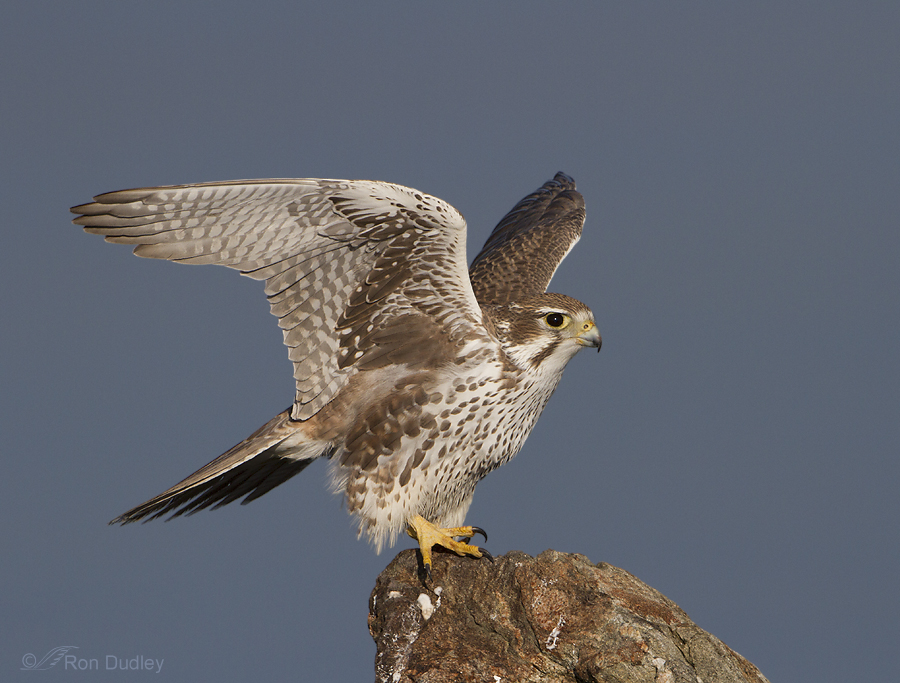
More often than not the Prairie Falcon holds its wings up or out (or both) for a few moments before it takes off. Sometimes the posture is maintained for quite a while. This is one of the better shots I have of it. Most of the photos to follow have reduced image quality but I include them to document the behavior.
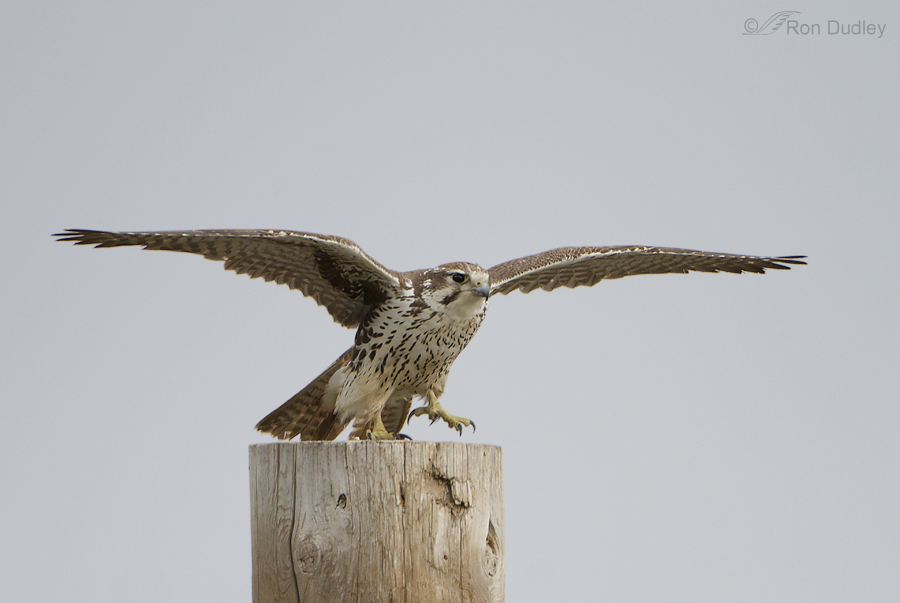
This bird held the posture for so long that I filled my buffer twice before it actually took off.
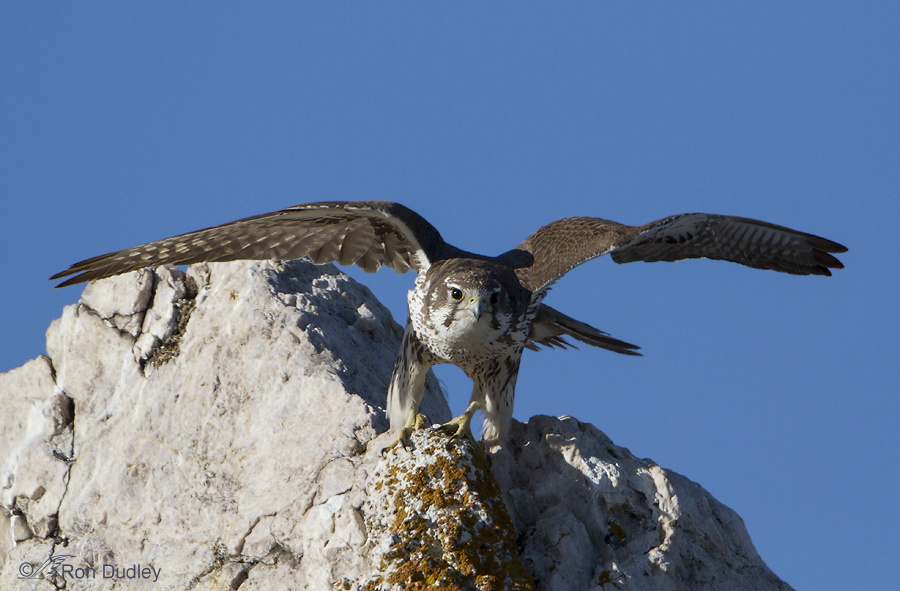
Most often I’ve seen it prior to take-off from an elevated perch like this one but it also happens occasionally when they take off from the ground.
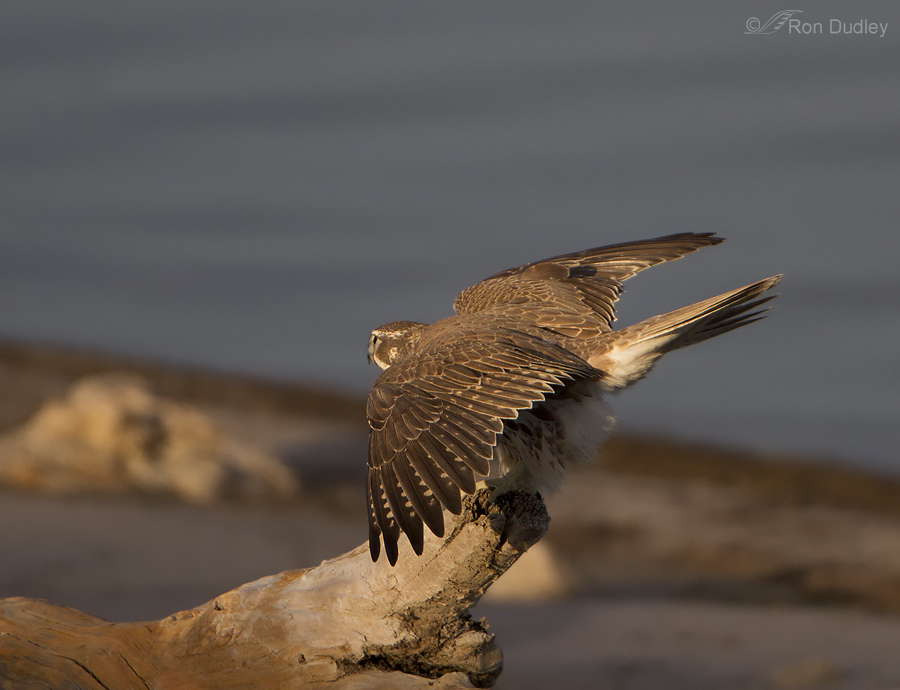
Another Prairie Falcon showing the posture.
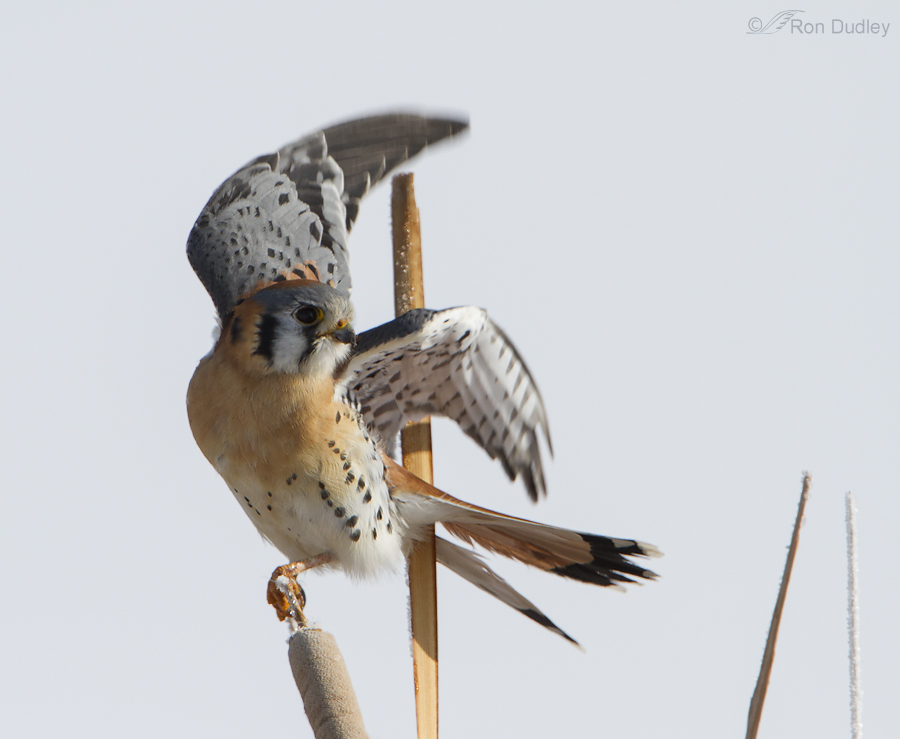
I don’t see it nearly as often with the American Kestrel as I do with larger falcons. Perhaps that has to do with the relative ease of take-off for this diminutive falcon.
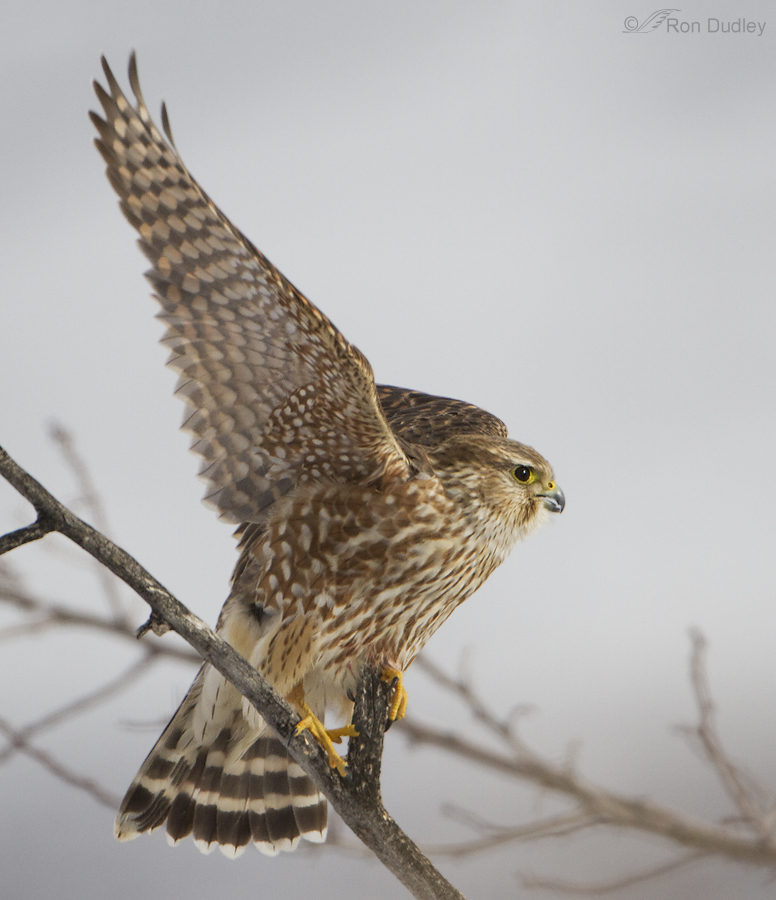
I get few opportunities with Merlins but I’ve noticed it occasionally with this species also.
I’m not sure if Peregrine Falcons do it. Usually when I’ve been close enough to photograph peregrines they’ve been on prey on the ground and they may be less likely to show the behavior when taking off from a non-elevated perch.
I don’t recall seeing this behavior in hawks, eagles or owls which makes me curious as to its purpose, if it has one.
Ron


How you ontinue to delight wih your amazing photos and educational commentary! Thank You!
Hi Ron,
Your photos are amazing! Greetings from Montreal, Canada.
This is another item I’ll have to keep eye out for. Super images.
I’ve seen a Gyrfalcon do this!!! Haven’t really thought too much about why they would do it. Wing loading sounds plausible though. I love these photos, especially the Merlin. You don’t often post Merlins, or maybe I have never seen a Merlin from you. They are so great. It’s good to see them from your side of the lens.
I see this in Kestrels here from time to time, and once in a Merlin. Nice observation.
Hi Ron,
My Peregrine Falcon, Jet, will do this when I release her. I will pull the hood and she will sit on my fist for a moment, then stretch her wings, start with very tiny strokes and work her way up to her normal wing beat just before take off, usually into the wind. As she leaves the fist, she loses a little altitiude like a fighter jet leaving an aircraft carrier before reaching full speed.
I think it is a matter of wing loading. Owls and Marsh Hawks have very light wing loading and I have never seen them do it in the wild. My daughter’s Red Tail doesn’t do this, nor have I seen it in any of our trained Buteo or Parabuteo hawks over the years. Red Tails are not particularly heavily wing loaded and they are airborn with one wingbeat.
Compared to the hawks and owls, the falcons are very compact and have a much higher wing loading. I always assumed that they just needed a little “warm up” before they get going.
Great photos!
Mark
Thanks, Mark. I’m glad to know that I wasn’t too far off base with this.